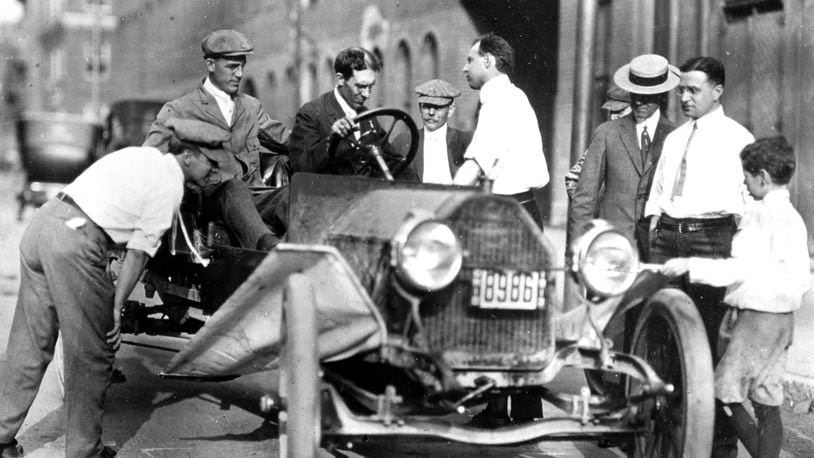The 18-page patent application for the first electric ignition device, filed June 15, 1911, started this way:
“Be it known that I, Charles F. Kettering, a citizen of the United States, residing at Dayton, county of Montgomery, and State of Ohio, have invented certain new and useful Improvements in Engine-Starting Devices, of which the following is a full, clear and exact description.”
While at NCR, he helped develop the first electric cash register in 1905.
Kettering, along with Col. Edward A. Deeds and several more NCR engineers, spent their spare time developing those “certain new and useful improvements” detailed in the patent in Deed’s barn on Central Avenue.
Known as the “Barn Gang” the group successfully developed the new ignition in 1910. Kettering’s idea would save motorists from the often back-breaking and sometimes dangerous job of crank-starting their engines.
Credit: Cadillac Motor Car Division
Credit: Cadillac Motor Car Division
The Cadillac Motor Car Co. placed an order for 5,000 units to be installed in its automobiles. To accommodate the job, Kettering and Deeds rented space in the Beaver Power Building, at East Fourth and St. Clair streets for the newly founded Dayton Engineering Laboratories Company (later shortened to Delco).
The company slogan was "Nothing on the dashboard but the switch."
By 1912, the electric starters had been installed on 8,000 new Cadillacs and by 1920 nearly all car manufacturers had installed the Delco ignition system as standard equipment.
The invention patented by Kettering sparked a boom in automobile sales and helped forge a new transportation culture.
About the Author
